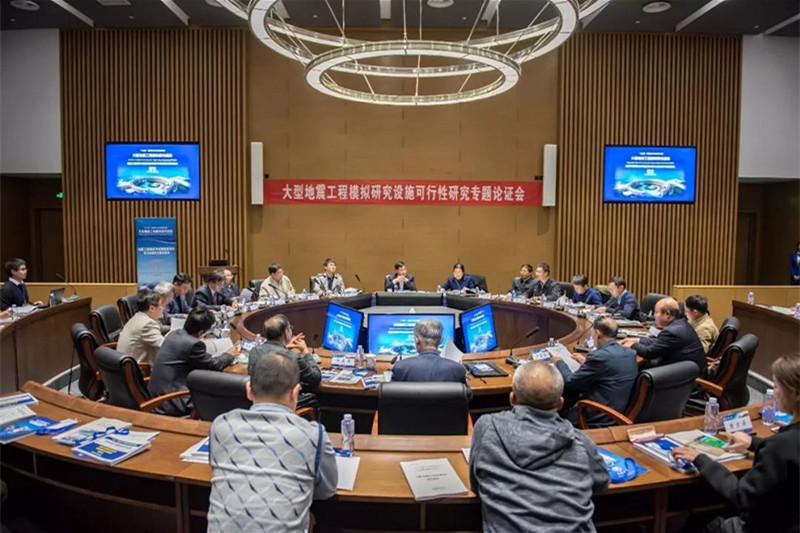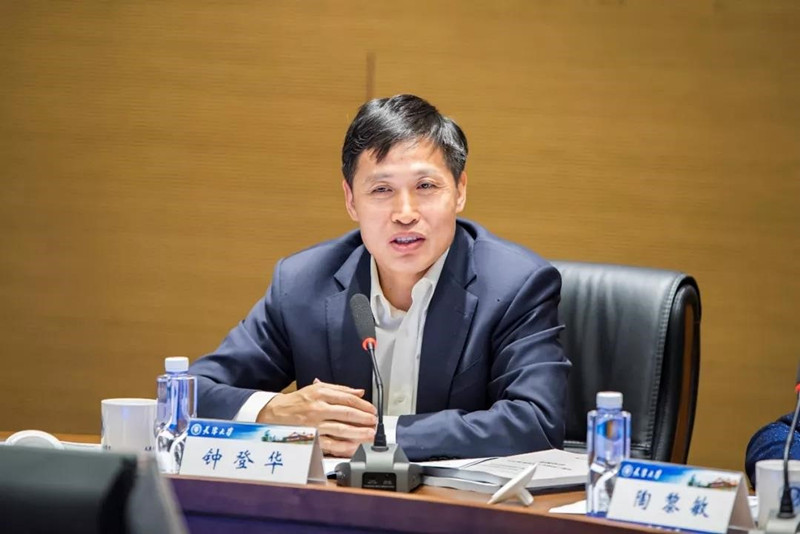
A number of leading experts in this field attended the symposium, including professor Xianjing Kong from Dalian University of Technology, Qingying Ren, a chief engineer from China Architecture Design and Research Group, Baosen Sha, an honorary chairman of China Hydraulics Pneumatics and Seals Association, professor Deyu Li from China Institute of Water Resources and Hydropower Research, professor Wanlin Cao from Beijing University of Technology, professor Jie Cui from Guangzhou University, professor Weixing Shi from Tongji University, professor Feng Fan from Harbin Institute of Technology, professor Yongchun Fang from Nankai University, professor Tong Guo from Southeast University, and Tao Chen, a senior engineer of China Academy of Building Research. Some honored guests such as Limin Tao, deputy director of technology department of China International Engineering Consulting Corporation, Yan Ge, the representative of the Department of Science and Technology of the Ministry of Education of China, as well as Tianjin Municipal Education Commission and Science and Technology Commission also attended this meeting. Denghua Zhong, Chinese Academy of Engineering academician and the president of Tianjin University, delivered a speech at the symposium. Coordinators of the project construction as well as professors and students were also present at this meeting.

Denghua Zhong, president of Tianjin University
In his speech, on behalf of the project lead unit, the president Denghua Zhong welcomed and expressed his gratitude to all experts and honored guests for their guidance. He pointed out that being one of the priority projects in the “13th Five-Year Plan” on major scientific and technological infrastructure facilities, “National Facility for Earthquake Engineering Simulation” is a public facility of China, which will provide long-term service for high-level research activities and will have great international influence. The feasibility research that is carried out at present faces a number of challenges, including tight construction schedule and high degree of complexity. The President asked school members and the project team to listen attentively to experts’ opinions and use them to improve the construction scheme, spare no efforts in making feasibility research, and work hard to start construction works earlier and let this facility serve the major strategic needs of China and the economic and social development of the new era. This facility will comprehensively enhance the level and ability of China to innovate in the field of engineering.

Professor Xianjing Kong, leader of the experts’ group
Under the chairmanship of professor Xianjing Kong, the leader of the experts’ group, specialists who attended the meeting heard a special report on the earthquake experimental simulation system and supporting equipment and service system, including the overall construction goals, details and scheduling. Besides, the report also revealed some data on earthquake simulation shaking table and underwater earthquake simulation shaking table,hybrid simulation and coupling control,supporting equipment and model manufacturing as well as the construction of other subsystems. At the meeting, the experts fully demonstrated the overall structure of project and the key indicators of the special systems, technological lines, engineering solutions, and scheduling as well as put forward valuable suggestions.
“National Facility for Earthquake Engineering Simulation” will become the largest and the most powerful seismic resistant simulation research facility in the modern world and will serve as an effective research tool for breakthroughs in key scientific issues. It will greatly enhance original scientific and technological innovation ability to reduce and prevent disasters as well as strengthen the ability of the whole society to mitigate the risks of natural disasters. This facility is expected to provide high-quality open and shared services to satisfy the major strategic needs of China and foster innovation-driven development as well as be of great scientific-technological and socio-economic importance.
By: School of Civil Engineering
Editors: Qin Mian and Keith Harrington